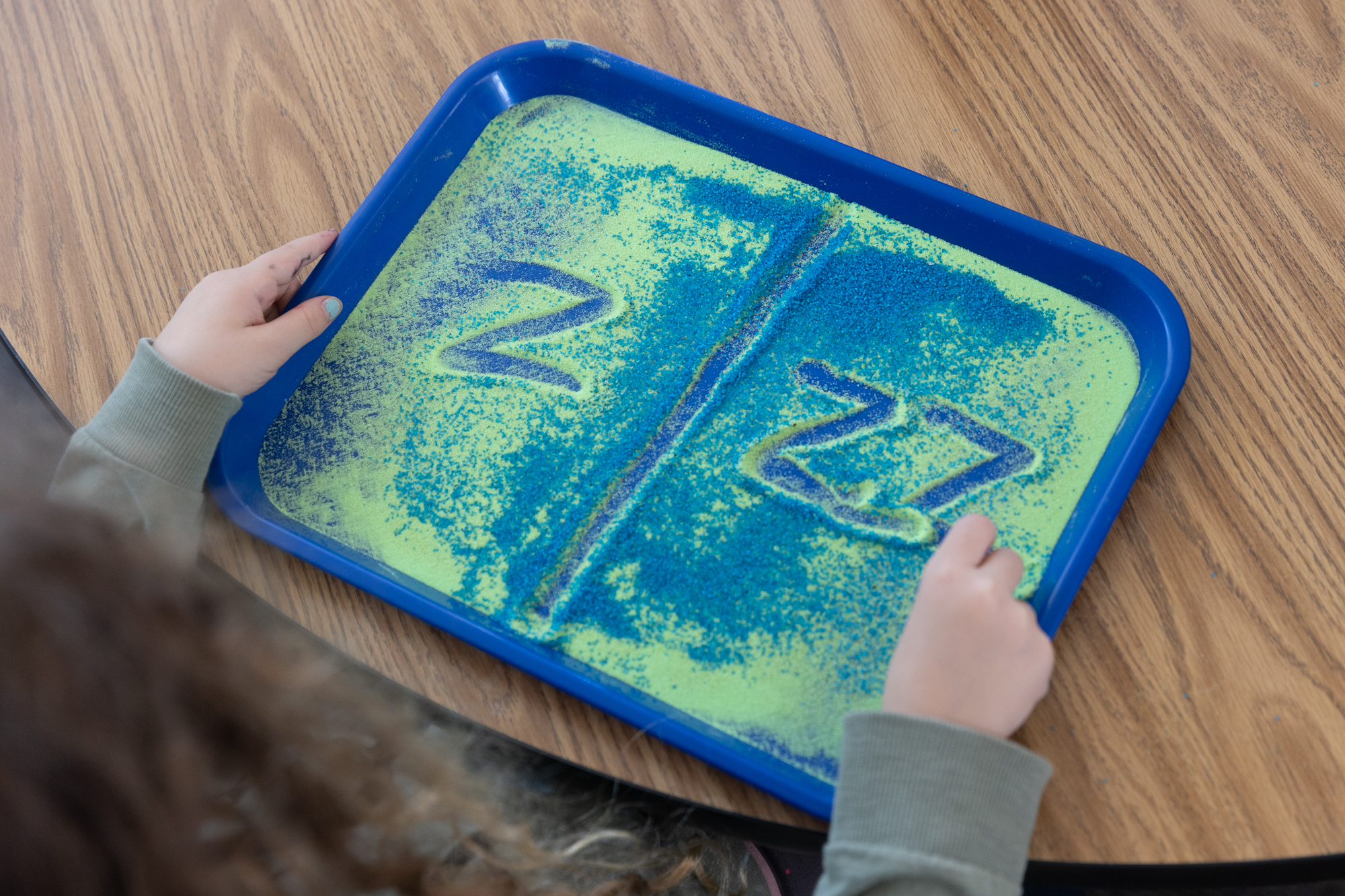Data from this past spring's standardized tests reveal that Palo Alto public schools are making substantial progress toward their early literacy goals, despite the impacts that the pandemic has had on education.
The portion of third graders reading "near" or "above" state standards in reading on the 2022 Smarter Balanced standardized test increased by 4.3 percentage points, compared to a pre-pandemic 2019 baseline, according to data the district presented at a school board meeting earlier this month.
The gains were far higher for certain groups, including a 15.8 percentage point increase for low-income students, a 16 point gain for students with disabilities and an 8.6 point jump for Latino students.
The district has focused its efforts on third grade, which is the first year students take state standardized tests. Research has also shown that being on track for reading in third grade is a powerful predictor of students' future academic success.
The Palo Alto Unified School District launched the Every Student Reads Initiative last year, with the specific goal of improving the reading performance of third graders from groups that have historically performed below the district averages. The particular groups that were identified are Latino, Black, Native Hawaiian or Pacific Islander students, as well as those who are low-income, disabled or learning English.
In the first year of the program, the school district wanted to see a 3 point improvement in the percentage of these students scoring "near" or "above" the state standard in reading.
All of the groups exceeded that goal, with the exception of Black and Native Hawaiian or Pacific Islander students, for whom the state didn't report results. To protect student privacy, the state only released reading results for groups with at least 30 students.
Superintendent Don Austin told the school board on Sept. 13 that the scores show that the focus on reading has yielded results.
"Tonight, hopefully we can celebrate a little bit," Austin said. "We're not celebrating victory — we're celebrating progress in an area where our district has not had great progress in the past for a long time."
The district also set a second goal of seeing a 3 point improvement for these groups in their overall English Language Arts scores (reading is one of four sections of the English Language Arts exam). That goal was achieved by low-income students, Black students and low-income Latino students. Latino students more broadly saw a 1.5 point increase. Those learning English and students with disabilities saw declines of 1 and 3.3 points, respectively.
According to Director of Literacy Instruction Danae Reynolds, the district has honed in on reading scores in particular, which may explain the stronger improvements in reading scores than language arts overall. For groups who didn't see improvements in their language arts scores, Reynolds said that the district will do a deeper dive into the nonreading portions of language arts.
It isn't currently possible to compare Palo Alto's scores to districts across the state because California has not yet released comprehensive data. Instead, the state has sent individual districts their scores, some of which have publicized them, including Palo Alto.
The California Department of Education announced earlier this week that it would publish the statewide test results in October, a reversal of the department's prior decision to withhold the data until it was ready to release a full dashboard of school data, which includes items like suspension and absenteeism rates.
Many expect the results will show statewide declines in student performance, fueled by the pandemic, suggesting that Palo Alto's improvement in reading performance may be unusual.
Seeing improvements in scores while coming out of a pandemic speaks to the district's commitment to student literacy, Reynolds said.
"It was really exciting to be able to work closely with principals and teachers and families and work together towards this common goal of increasing reading achievement for our students," Reynolds said.
Though the district focused specifically on third grade results at a Sept. 13 board meeting, overall student performance on the English Language Arts exam (grades 3 through 8 and 11) also showed improvement, with a 1.2 percentage point increase in the number of students meeting or exceeding standards compared to 2019.
Despite the gains, there are still substantial disparities in reading performance. For third graders overall, 93.4% of students were "near" or "above" the state standard this spring, but only 77.8% of low-income students and 81.3% of disabled students met the same benchmark.
These gaps have been a longstanding problem for both Palo Alto Unified and schools across the state and nation. The Every Student Reads Initiative in particular was an effort to address the disparity.
"We recognized from looking at our student scores over time that we historically have not been able to serve these students in the way in which we know we can," Reynolds said.
Beyond the 3 point progress goal for last school year, the district wants to see another 4 point increase in reading and language arts scores for underserved student groups this school year, as well as a 5 point increase in the 2023-2024 year.
To improve student reading performance, Reynolds told the Weekly that the district used a phonics program last school year called the Orton Gillingham methodology, which takes a multisensory approach. Students will do activities like drawing letters in sand as they say the sound that the letter makes.
The phonics methodology is used alongside a broader English Language Arts curriculum. This past spring, the school board approved a new ELA curriculum, known as Benchmark Advance/Adelante, despite opposition from a number of the teachers who piloted it.





Comments
Registered user
Professorville
on Sep 30, 2022 at 11:44 pm
Registered user
on Sep 30, 2022 at 11:44 pm
This analysis is a classic "how to cheat with statistics."
1. The actual cohort sizes are way too small.
Web Link
The cohort sizes of the groups of interest are 11,58,63,99,107. 3% imply 2-3 students (!!) (or a fractional student for 11). Also there is large overlap between groups.
2. The methodology of looking at a cohort of 3rd graders that fall in a certain category in different years is problematic with such tiny numbers. There is a much more accurate way of understanding student growth that PAUSD CAN use. This is through trajectories: Following each student in a group say from K to 3rd grade using a standardized high quality assessment tool (like NWEA MAP), smarter balance would also do. But SAME student. This was pointed to PAUSD and board members in the past.
3. While reading "improved," Overall ELA scores were mixed. But article still selectively cites the 3/6=1/2 of the groups that "met goal" as a success. A random assignment to met/non-met would yield in expectation.
4. Question: The smarter-balanced assessments were administered Spring 2022. But the literacy curriculum (against recommedation of teachers) was changed AFTER that.
Web Link
What am I missing? Why change something PAUSD and board believe (correctly or not) that it works?
It is rather sad to see this lauded here as "substantial progress", board member Dharap lauding it as his achievement (Palo Alto post Wednesday and elsewhere). Candidate Nicole Chiu-Wang, trained by current board, parrots that as success (without actually vetting the report herself). The supt claims "focus... yielded results". I suggest board members and candidates re-take high school math.
Registered user
Another Palo Alto neighborhood
on Oct 1, 2022 at 12:37 am
Registered user
on Oct 1, 2022 at 12:37 am
This is interesting and hopeful. Just gently reminding that correlation isn't causality. Many factors could be at work here. For example, to mitigate the spread of Covid-19, the district purchased better air filtration and even standalone units.
"Decades of scientific research show when you improve indoor air quality, you improve student health, student thinking, and student performance,” says Joseph Allen, an air quality expert at Harvard’s T. H. Chan School of Public Health"
Web Link
In fact, the Aliso Canyon gas leak resulted in 18 schools being given monitoring and air filtration. What they found in the schools that received the filters was such an improvement in student performance compared to schools that didn't, it was the equivalent of intensive tutoring or reducing class sizes by 1/3.
Web Link
The whole study is even more enlightening.
Web Link
Turns out improving air quality is a highly cost-effective way of improving student performance, while also reducing absenteeism from illness (in both students and teachers). Note that the study found the improvements from better air quality were independent of even absenteeism.
Our district made some very important investments to improve air quality because of the pandemic. To sustain or improve them longterm, research points to adopting an effective framework for indoor air quality management. This does involve communication with and participation by occupants of those spaces: teachers, staff, parents, and students, something district administrators will need help accepting.
Before the pandemic, the district was hostile to doing this, frankly. Hopefully that has changed. They could see even more gains in student achievement, amplifying their focused work on literacy.
Registered user
Another Palo Alto neighborhood
on Oct 1, 2022 at 8:11 am
Registered user
on Oct 1, 2022 at 8:11 am
I would imagine that this could easily be due to pandemic/lockdown. Families were home and probably spent more time reading and playing board games together. If a child sees a parent sitting reading a book it will seem like a normal activity and might be followed. Parents who were not as busy rushing around all evening would probably spend more time reading to young children and even having discussions about the books being read. I would be interested to compare this to the following year before seeing it as a trend or even accrediting it to the school district.
Reading with children is not just a quick story at bedtime. To sit and read with a child means much more than just treating it like a chore such as teeth brushing or bed making. To sit and read with a child takes time to enjoy the material together, to speculate about what comes next, to anticipate the excitement, to understand the nuances, to laugh, to cry, to be excited, to imagine. A child who is taught to enjoy reading on a daily basis will automatically be a better reader because of the desire to do more reading.
Registered user
another community
on Oct 3, 2022 at 1:48 pm
Registered user
on Oct 3, 2022 at 1:48 pm
Good news if the data is valid. Give credit where it is due: to all parties that made a meaningful effort. Let's hope progress can be sustained.
Registered user
Fairmeadow
on Oct 3, 2022 at 4:05 pm
Registered user
on Oct 3, 2022 at 4:05 pm
The article and data are as deceiving as every member of the school board and the Superintendent.
Registered user
Esther Clark Park
on Oct 3, 2022 at 6:42 pm
Registered user
on Oct 3, 2022 at 6:42 pm
I guess the takeaway I have is why did admin and the board push through a divisive ELA adoption last year? That crushed the morale of primary teachers. Now they're deep into using this curriculum that was adopted under a cloud. Will the people who made this decision be around to take accountability for possibly lower scores? Look at the comments that @Greene and Paly Parent made and you can see the bad faith embedded in this "celebration". Add to that the laughable admins taking credit for "telling teachers to pay attention to this". What we're left with is a classic heads I win, tails you lose situation. Teachers needed to be told to pay attention by these amazing admins - because they're not smart enough. But, if scores dip next year (and they will-as with any curriculum adoption), that's also because of teacher incompetence. The only people held accountable will be the teachers. Touche, school board. Touche admin. Well played.
Registered user
another community
on Oct 4, 2022 at 7:46 am
Registered user
on Oct 4, 2022 at 7:46 am
No doubt Mr. Austin will be touting these gains, real or otherwise, in his next newsletter. Whether or not teachers wanted the new reading methodology is irrelevant to him. He is looking for something to spin in order to prop himself up. Niche rankings are out too. Niche is not an objective pollster. They make money by selling "School Profile Services". Mr. Austin knows that, but he will still find a way to celebrate these numbers as well. He is a master of shrugging off "bad news" with silly platitudes, and highlighting any scrap that makes him seem a competent leader. It has worked for him up to this point.
The fact of the matter is that PAUSD schools historically score well on standardized tests, and always rank high no matter who is doing the "research". This is mostly due to well educated, motivated, and involved students and parents coupled with ample funds relative to other districts.
The real question for PAUSD stakeholders is "Have your schools gotten better or worse since Mr. Austin took the reins?" We know how Don would answer. How would you answer?
Registered user
Crescent Park
on Oct 4, 2022 at 4:22 pm
Registered user
on Oct 4, 2022 at 4:22 pm
@Retired PAUSD Teacher -- You are so right. Add to that the fact that more and more families are pursuing supplemental instruction in core areas like math and writing (especially in middle school). PAUSD's level of academic support and equitable access is as low as I've seen it in my decades here.
Regarding "taking credit" and the platitudes, for years now Churchill and the Board have played a double-speak game of touting the test scores, college admissions, and high achievement while progressively removing the academic nutrition that's getting kids there. It's the families. It's always /been/ the mostly the families, but now more than ever.
Registered user
Professorville
on Oct 6, 2022 at 5:06 pm
Registered user
on Oct 6, 2022 at 5:06 pm
More on "cheating with statistics:"
The metrics were set in the PAUSD promise:
Web Link
results reported in
Web Link
(on our 3rd graders taking SBAC tests in 2019 and 2022)
Issues with metrics:
Lack statistical significance and hence should not be actionable. Even under the (problematic as we shall see) assumption of (*) samples drawn for the SAME distribution, cohort sizes are too small: For n=60 (our Latino SED 3rd graders) and 40% meeting "goal," the standard deviation is > 6% (!) This means that an increase of 3% is a slightly biased random coin flip (!!). This is Algebra2 (10th grade) math that our board and district staff seemed to have missed (???).
Other issues: (1) "Promise" focused only on the bottom 5-10% of students (level 1) or bottom 25% (level 1-2). But the majority of our students are meeting grade level standards and they deserve to be engaged and challenged as well. (2) The district could use much better measures (trajectories).
Explaining the perceived "improvement":
Assumption (*) does not hold! The population changed in a way that tilts these numbers up. PAUSD is now paying for private school for many more students with disabilities -- especially those with more challenges that are much more likely to have reading level 1 (well below standards). Unfortunately, SED students are much more likely to be in this "disabilities" category. Overall there was 14% drop in enrollment. But there was whopping 38% drop (nearly triple) in those with disabilities! (101 to 63). Focused on the more challenged kids. This nicely explains the "gains"....
We will produce a doc that (as usual) will be sent to board members and district and (as usual unless we vote out current board members) will be ignored. In the post, Dharap listed both the metrics and the improvements as his 2/3 "accomplishments"...
Registered user
Professorville
on Oct 9, 2022 at 1:28 am
Registered user
on Oct 9, 2022 at 1:28 am
Here is a link to a document that contains the relevant calculations:
Web Link
Highlights:
-- We show that there is a major design flaw with the “PAUSD promise” early literacy progress goals. They lack statistical significance - A random flip of a 4:6 biased coin would "meet" the goal even without changes to the teaching.
-- We explain the perceived gains.
This report will be shared with board members and the administration.
Registered user
The Greenhouse
on Oct 9, 2022 at 8:53 pm
Registered user
on Oct 9, 2022 at 8:53 pm
@Greene and Paly - thank you! I don't know much about how to interpret statistics, but you've brought some clarity to something I've always suspected. It always seems like 25 Churchill puts out a million goals and initiatives and promises, then, lo and behold every single one is met! It's a miracle of world-class management! It's always struck me as odd and disingenuous. They quite rightly know that the Board and the public is never going to analyze their methodology - the declaration of victory is all that matters - the Board loves to feel successful, and the public feels like they live in a great district. Meanwhile, the core of this institution is rotting - to the detriment of students. Thanks for the analysis document - keep them coming!!
Registered user
another community
on Oct 11, 2022 at 9:34 am
Registered user
on Oct 11, 2022 at 9:34 am
Just like the reduction in D's and F's at the middle schools. If you alter the grade scale, you will see almost immediate changes that look great. If you make it clear to teachers that F's and 0's are unacceptable no matter what, that helps too. Then the Board and Administration can chalk it all up to things like "Standards Based Grading" or "Differentiated Instruction", and claim another hollow victory.
It doesn't matter if you are setting up some students for problems down the road, because the newsletter comes out on Friday.